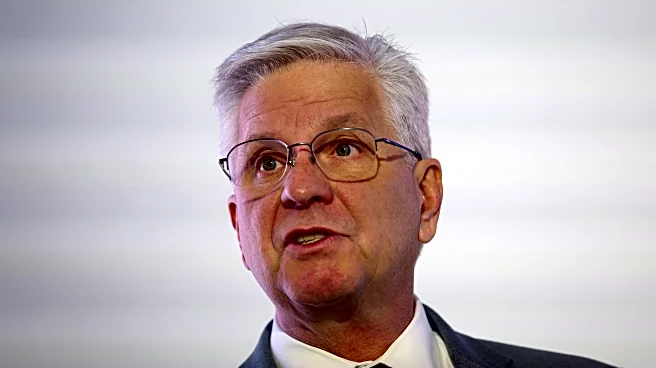What's Happening?
Federal Reserve Governor Christopher Waller has indicated that the U.S. labor market remains weak, supporting the case for further interest rate cuts. Speaking on CNBC's Squawk Box, Waller emphasized the need for the Federal Reserve to proceed with caution, suggesting quarter-point reductions as the central bank evaluates economic conditions. Recent private data, including a report from ADP, showed job losses in September, reinforcing concerns about the labor market's fragility. Waller's comments highlight a cautious approach to monetary policy, balancing the need for economic stimulus with the risks of inflation.
Why It's Important?
The Federal Reserve's approach to interest rate cuts is crucial for the U.S. economy, impacting borrowing costs, consumer spending, and business investment. A cautious strategy, as advocated by Waller, aims to support economic growth while mitigating inflation risks. This approach could benefit sectors sensitive to interest rates, such as housing and consumer finance, by making borrowing more affordable. However, persistent labor market weakness may challenge economic recovery efforts, influencing policy decisions and market expectations. Stakeholders, including businesses and investors, will closely monitor the Fed's actions for signals on future economic conditions.
What's Next?
The Federal Reserve is likely to continue assessing economic indicators, including labor market data, to guide its monetary policy decisions. Future rate cuts may depend on the evolving economic landscape, with potential adjustments based on inflation trends and employment figures. Stakeholders, including policymakers and financial markets, will watch for further statements from Fed officials to gauge the central bank's direction. The cautious approach suggested by Waller may lead to incremental changes, allowing the Fed to respond flexibly to economic developments.
Beyond the Headlines
The Federal Reserve's cautious stance on rate cuts reflects broader concerns about balancing economic growth with inflation control. This approach underscores the complexity of monetary policy in a post-pandemic economy, where traditional indicators may not fully capture underlying economic dynamics. The Fed's decisions could influence global financial markets, given the U.S. economy's significant role in international trade and investment. Additionally, the focus on labor market conditions highlights ongoing challenges in achieving full employment, a key goal of the Fed's mandate.











